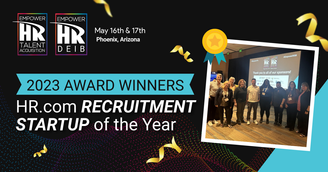When the world shifted
Back in February/March 2020, when lockdowns commenced and white-collar work changed drastically for some, we had a million different discussions going on. “Work from home as a classist idea” and “What might be the future of commercial real estate in downtown cores?” seemed to dominate, although here and there you’d hear a bit about the need for at-scale remote hiring.
This was, and remains, a big topic. Growing companies just can’t stop growing because of a pandemic. There are new challenges, sure, but they need the best engineers, salespeople, account managers, marketers, et al that they can find — and now they have to hire them over Skype or Zoom or something similar.
Well, actually, that’s a best-case scenario. See, a tool like Skype or Zoom are at least synchronous conversations, meaning they are “two-way,” or between two real human beings. When COVID hit, a lot of companies tried to embrace one-way tools for remote hiring. A one-way tool is something where a hiring manager/recruiter leaves questions, and the candidate records themselves answering the questions. There’s no real dialogue, back-and-forth, or communication.
Two-way tools have a lot of advantages over one-way tools for finding the best people; more on that in a second.
Now, some companies had experience with remote hiring, because they had dispersed teams or key WFH employees. But even in the cases of hiring those people, pre-pandemic, they probably flew them in for a final round. At many companies, the attitude towards hiring is “you know when you know” and you need to see to know, but “see” is often contextualized as in-person, in a conference room, in a HQ, etc. Many are not comfortable hiring over a series of video calls. The psychology of that type of process isn’t there for everyone.
Problem: there’s potential liability in a big candidate day right now, or even flying someone to your base. So, people needed to figure it out. For the most part, it seems like they have (despite job losses). But as they’ve figured it out to the best of their ability, companies and executives also realize remote hiring is harder than standard hiring, and there are examples of “buyer’s remorse” all over the ecosystem of COVID remote hiring.
It’s worth asking, then: how could we maximize remote hiring into something that’s valuable and easier to execute on?
The keys to remote hiring
These would be some of the big ones:
- Make sure your platform of choice is two-way: Top candidates want to speak with a real person. Are you building a process to attract top candidates, or screen out bad candidates? One-way tools don’t achieve very much, and in fact they’re often just a race for companies to automate more of the recruiting function. People learn about each other, work history, and motivations through actual conversation, which only happens in two-way tools.
- Make sure your platform has phone and video calls: Video calls aren’t a necessity for the first round always, but as you get later in the process, stakeholders will want to be able to see the candidate.
- Make sure your recruiters are trained in phone/video screen best practices: We’ve got some tips for that, courtesy of a recruiting Batman. Also make sure they know the best questions for hiring manager intake.
- Make sure you can record answers and context: In a time period where everyone is seemingly “hopping between Zoom calls,” recruiter hand-scribbled notes aren’t going to do it. You need a way to record candidate audio (and potentially video, in later rounds) in the cloud so that hiring managers can go back and look at it when they have time, and even directly compare candidates on specific questions.
- Make sure you have ways to collaborate: Collaboration during hiring takes a lot of forms, from dropping a simple candidate profile/interview recording in Slack and collaborating that way, or sourcers and recruiters screening talent together. Because we are not physically together as much, we need to make collaboration as seamless as possible.
- Make sure scheduling and logistical processes are super easy: Look for “Calendly on steroids.”
- Make sure you can easily search interview transcripts from back when to rediscover some top talent: Remember when you were worried about hiring Bobby because he lives in Denver and most of the team is in Cincinnati? Well, that matters less now. So pull up Bobby’s transcripts and let’s get it back in front of the hiring manager!
- Make sure you acknowledge “video interview fatigue:” It’s very real, and some top candidates might have been on 4-5 that day. Your recruiting team might have been on 10. Have a plan for breaks, two-hour lunch windows, creative scheduling, no Friday interviews, etc, etc. Be aware of the video fatigue problem.
Now, most of the above is inherently tactical. That’s how we approached this particular article. There are obviously also bigger questions around defining job roles, defining the culture, being able to clearly answer when people might be expected back in an office and what schedule that will take (five days, A/B, hybrid, etc.). There are bigger questions and concepts you need to be prepared for, but right now where most organizations are still struggling is in the execution, tactics, scheduling, and alignment (between stakeholders and recruiters) phases. The above is a guide to working towards success there.
HoneIt can do all these things for you — and much more. In fact, one of our clients (a recent IPO) has a hiring manager based in London who moved to Romania for part of COVID, and recently did several interviews with candidates in Hong Kong, Korea, and China. She found it easy and delightful!
If you’d be interested in learning more about how we empower remote hiring from Slack integrations to video calls to searchable transcripts to delightful hiring manager relationships, reach out when you have time.


